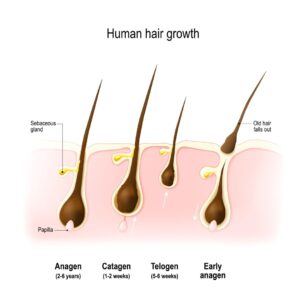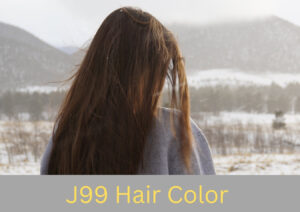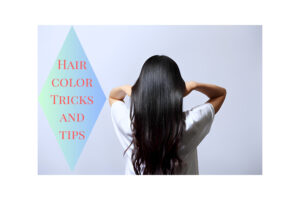In today’s fast-paced world, managing crazy colored hair dye has become an essential part of many people’s self-expression and style. However, for individuals with skin allergies, achieving vibrant and stylish hair color can be a bit more challenging. Skin allergies can react negatively to the chemicals present in hair color, causing discomfort and unwanted reactions. But fear not! In this guide, we’ll explore effective ways to manage hair color for those with skin allergies while maintaining healthy and beautiful hair.
Table of Contents

- Crazy Color Hair Dye and Skin Allergies
- What Causes Skin Allergies?
- Common Chemicals in Hair Color
- Crazy Color Hair Dye and Allergy-Free Hair Color
- Henna-Based Color Ammonia-Free Color
- Patch Testing Before Application
- Preparation for Crazy Color Hair Dye
- Consultation with Dermatologist: Scalp and Hair Analysis
- Deep Conditioning Treatments
- Step-by-Step Crazy Color Hair Dye Process
- Strand Testing Application Techniques
- Monitoring Allergic Reactions
- Maintaining Crazy Color Hair Dye and Health
- Color-Protecting Shampoos and Conditioners Minimizing Heat Styling
- Regular Trimming and Deep Conditioning
- Natural Remedies for Crazy Color Hair Dye Against Allergic Reactions
- Aloe Vera for Soothing Apple Cider Vinegar Rinse
- Coconut Oil Scalp Massage
- Consulting Professionals for Crazy Color Hair Dye: When to Seek Help
- Severe Allergic Reactions: Persistent Scalp Irritation
- Changes in Hair Texture
- Balancing Crazy Color Hair Dye and Allergies
- Taking Breaks Between Colors: Opting for Highlights or Low-lights
- Embracing Natural Hai
1. Crazy Color Hair Dye and Skin Allergies

What Causes Skin Allergies?
The main hurdle in managing crazy-colored hair dye is skin allergies, also known as contact dermatitis, which occur when the immune system reacts to a foreign substance that comes in contact with the skin. Hair color often contains chemicals that can trigger these reactions, leading to symptoms like itching, redness, and inflammation.
Common Chemicals in Hair Color
Many traditional hair colors contain chemicals like ammonia, peroxide, and paraphenylenediamine (PPD). These chemicals are known allergens and can cause adverse reactions, especially in individuals with sensitive skin. Avoiding these ingredients is crucial for managing skin allergies during hair coloring.
2. Crazy Color Hair Dye and Allergy-Free Hair Color
There are some substances that are allergy-free for managing crazy-colored hair dye.
Henna-Based Color
Henna is a natural and plant-based alternative for hair coloring. It’s free from harsh chemicals and can provide vibrant shades ranging from red to brown. However, it’s essential to ensure the henna product is pure and doesn’t contain additives that could trigger allergies.
Ammonia-Free Color
Ammonia-free hair colors are formulated to be gentler on the scalp and hair. They lift the hair cuticle less aggressively, reducing the risk of allergic reactions. Opt for brands that offer ammonia-free options for a safer coloring experience.
Patch Testing Before Application
Before applying any crazy-colored hair dye, especially if you have a history of skin allergies, perform a patch test. Apply a small amount of the dye to a small area of skin and wait 48 hours to observe any adverse reactions. This test helps identify potential allergies before applying the dye to your hair.
3. Preparation for Managing Crazy Color Hair Dye
For the preparation of managing crazy color hair dye, you have to make:
Consultation with Dermatologist
If you have a history of skin allergies, it’s wise to consult a dermatologist before attempting hair coloring. They can provide personalized advice, recommend allergy-friendly products, and guide you on the best approach to achieving your desired hair color.
Scalp and Hair Analysis
Understanding your scalp and hair health is essential. An unhealthy scalp is more prone to allergic reactions. Regularly moisturize your scalp and ensure it’s free from irritations or infections before applying any hair dye.
Deep Conditioning Treatments
Prioritize the health of your hair by indulging in deep conditioning treatments regularly. Well-nourished hair is more resilient and better prepared to handle the coloring process without excessive damage.
4. Step-by-Step Management of the Crazy Color Hair Dye Process
For managing crazy-color hair dye, the step-by-step process of coloring has been given as follows:
Strand Testing
Perform a strand test to preview how the chosen color will appear on your hair. This step allows you to make adjustments and ensures you won’t experience any unwanted surprises after full application.
Application Techniques
Follow the instructions provided by the dye manufacturer for application techniques. Wear gloves to minimize skin contact and apply the dye evenly, focusing on the hair length rather than the scalp.
While the dye develops, monitor your skin for any signs of allergic reactions. If you experience itching, burning, or redness on your scalp or skin, immediately wash off the dye and consult a dermatologist.
Color-Protecting Shampoos and Conditioners
Invest in shampoos and conditioners specifically designed for color-treated hair. These products help preserve the vibrancy of your hair color while keeping it nourished and healthy.
5. Maintaining Crazy Color Hair Dye and Health
For managing crazy color hair dye for a long time and health, the following process has been given:
Minimizing Heat Styling
Excessive heat styling can lead to dry and brittle hair, exacerbating the risk of damage. Embrace your natural texture and limit the use of heat styling tools to maintain optimal hair health.
Regular Trimming and Deep Conditioning
Schedule regular hair trims to eliminate split ends and maintain your hair’s overall health. Deep conditioning treatments should also remain a staple in your hair care routine.
6. Natural Remedies for Crazy Color Hair Dye Against
Allergic Reactions
There are some natural remedies for crazy-colored hair dye that prevent allergic reactions. The details of the natural remedies are given below:
Aloe Vera for Soothing
If you experience mild irritation after hair coloring, apply pure aloe vera gel to the affected areas. Aloe vera has soothing properties that can alleviate itching and redness.
Apple Cider Vinegar Rinse
An apple cider vinegar rinse can help restore the pH balance of your scalp and alleviate discomfort. Mix equal parts apple cider vinegar and water and use it as a final rinse after shampooing.
Coconut Oil Scalp Massage
Regular scalp massages with coconut oil can improve blood circulation, promote hair growth, and provide relief from itching. Coconut oil also has antimicrobial properties that can prevent scalp infections.
7. Consulting Professionals for Crazy Color Hair Dye:
When to Seek Help
In case of any worries, you may seek help from the professionals, who will suggest what to do for having crazy-colored hair dye.
Severe Allergic Reactions
If you experience severe allergic reactions, such as blistering, extreme swelling, or difficulty breathing, seek medical attention immediately.
Persistent Scalp Irritation
If you notice persistent scalp irritation, even after the allergic reaction subsides, consult a dermatologist. They can recommend suitable treatments to address the irritation.
Changes in Hair Texture
If you notice significant changes in your hair texture after coloring, such as excessive dryness or brittleness, consult a hairstylist or dermatologist for guidance.
8. Balancing Crazy Color Hair Dye and Allergies
To strike a balance between crazy color hair dye and allergies, you have to adopt the following strategies:
Taking Breaks Between coloring
Give your scalp and hair a break between coloring sessions. Allowing your hair to recover between applications can reduce the risk of irritation and damage.
Opting for Highlights or Low-lights
Consider opting for highlights or lowlights instead of full hair color changes. This approach minimizes




















gobi xyandanxvurulmus.6OOpksAeDrmG